▼ MSME Delayed Payment portal: MSME Samadhaan [10-31-17]
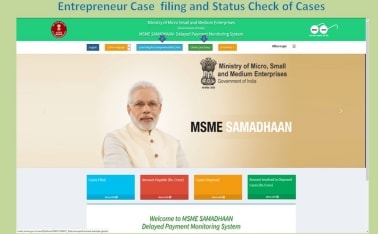 Union Minister of State (Independent Charge) Shri Giriraj Singh launched MSME Delayed Payment Portal - MSME Samadhaan (http://msefc.msme.gov.in) empowering micro and small entrepreneurs across the country to directly register their cases relating to delayed payments by Central Ministries/Departments/CPSEs/State Governments.
Micro, Small and Medium Enterprise Development (MSMED) Act, 2006 contains provisions to deal with cases of delayed payment to Micro and Small Enterprises (MSEs).
As per the provisions, the buyer is liable to pay compound interest with monthly rests to the supplier on the amount at three times of the bank rate notified by Reserve Bank in case he does not make payment to the supplier for the supplies of goods or services within 45 days of the day of acceptance of the goods/service or the deemed day of acceptance.
The Portal will give information about the pending payment of MSEs with individual CPSEs / Central Ministries, State Governments, etc.
The CEO of PSEs and the Secretary of the Ministries concerned will also be able to monitor the cases of delayed payment under their jurisdiction and issue necessary instructions to resolve the issues.
The portal will greatly facilitate the monitoring of the delayed payment in a more effective manner. The information on the portal will be available in public domain, thus exerting moral pressure on the defaulting organisations.
The MSEs will also be empowered to access the portal and monitor their cases. Union Minister of State (Independent Charge) Shri Giriraj Singh launched MSME Delayed Payment Portal - MSME Samadhaan (http://msefc.msme.gov.in) empowering micro and small entrepreneurs across the country to directly register their cases relating to delayed payments by Central Ministries/Departments/CPSEs/State Governments.
Micro, Small and Medium Enterprise Development (MSMED) Act, 2006 contains provisions to deal with cases of delayed payment to Micro and Small Enterprises (MSEs).
As per the provisions, the buyer is liable to pay compound interest with monthly rests to the supplier on the amount at three times of the bank rate notified by Reserve Bank in case he does not make payment to the supplier for the supplies of goods or services within 45 days of the day of acceptance of the goods/service or the deemed day of acceptance.
The Portal will give information about the pending payment of MSEs with individual CPSEs / Central Ministries, State Governments, etc.
The CEO of PSEs and the Secretary of the Ministries concerned will also be able to monitor the cases of delayed payment under their jurisdiction and issue necessary instructions to resolve the issues.
The portal will greatly facilitate the monitoring of the delayed payment in a more effective manner. The information on the portal will be available in public domain, thus exerting moral pressure on the defaulting organisations.
The MSEs will also be empowered to access the portal and monitor their cases.
|
▼ Start up programs for oil and gas sector entrepreneurs [10-26-17]
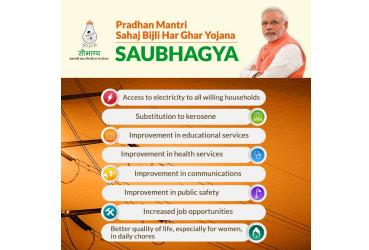 At launch function of Start-up programme for entrepreneurs in oil and gas sector, the ministry said the initiative will change the status of the youth of our country from job seeker to that of job provider.
Shri Pradhan said the business partnership between the start-ups and the PSUs of Petroleum Ministry will create a new benchmark for growth and job creation as India has a huge potential for investment of over USD 300 bn in the energy sector in the next ten years.
There are a wide variety of opportunities that present a wide spectrum of options for launching start-up initiatives.
The Minister said the government is committed to provide clean energy to every household of the country and in the last 15 months 3 crore LPG connections have been provided under the Pradhan Mantri Ujjwala Yojana (PMUY).
In coming 15 months, a target of providing more than 4 crore electricity connections has been set under the Saubhagya Scheme.
The oil PSUs are set to take advantage of the emerging technologies in the oil sector with the help of the youth to match the international standards.
Backing the spirit of innovation, 10 public sector undertakings under the Ministry of Petroleum and Natural Gas, including the IOCL, ONGC, EIL, OIL, NRL, BPCL, HPCL, GAIL and MRPL, have created a corpus of INR 320 crore to support start-up initiatives.
Since the launch of the scheme by the PSUs, there has been a constant flow of applications and some extremely innovative ideas have come through.
The Start- up ideas have been received from a varying age group (from a fresh engineering graduate to a 70-year-old entrepreneur) from across the country.
Innovative Projects Funded
The 10 oil PSUs have together selected nearly 30 start-up projects for support in the first round of the scheme. Some of the many innovative projects that have made it after rigorous evaluation include: At launch function of Start-up programme for entrepreneurs in oil and gas sector, the ministry said the initiative will change the status of the youth of our country from job seeker to that of job provider.
Shri Pradhan said the business partnership between the start-ups and the PSUs of Petroleum Ministry will create a new benchmark for growth and job creation as India has a huge potential for investment of over USD 300 bn in the energy sector in the next ten years.
There are a wide variety of opportunities that present a wide spectrum of options for launching start-up initiatives.
The Minister said the government is committed to provide clean energy to every household of the country and in the last 15 months 3 crore LPG connections have been provided under the Pradhan Mantri Ujjwala Yojana (PMUY).
In coming 15 months, a target of providing more than 4 crore electricity connections has been set under the Saubhagya Scheme.
The oil PSUs are set to take advantage of the emerging technologies in the oil sector with the help of the youth to match the international standards.
Backing the spirit of innovation, 10 public sector undertakings under the Ministry of Petroleum and Natural Gas, including the IOCL, ONGC, EIL, OIL, NRL, BPCL, HPCL, GAIL and MRPL, have created a corpus of INR 320 crore to support start-up initiatives.
Since the launch of the scheme by the PSUs, there has been a constant flow of applications and some extremely innovative ideas have come through.
The Start- up ideas have been received from a varying age group (from a fresh engineering graduate to a 70-year-old entrepreneur) from across the country.
Innovative Projects Funded
The 10 oil PSUs have together selected nearly 30 start-up projects for support in the first round of the scheme. Some of the many innovative projects that have made it after rigorous evaluation include:
- Electronic leak detector for detecting body and bung leak of LPG cylinders
- Self – sustaining low-maintenances toilets, or eco-toilets
- Multiuse Fuel from Agricultural Waste Biomass
- Remotely Operated Vehicles (ROVs) for underwater inspections
- Converting waste plastics to high value petroleum fuels
- Solar Stove- Revolutionary Day and Night Indoor Solar Cooktop System for all lifestyles
|
▼ DOT introduces 3 new ways to link mobile with Aadhaar [10-26-17]
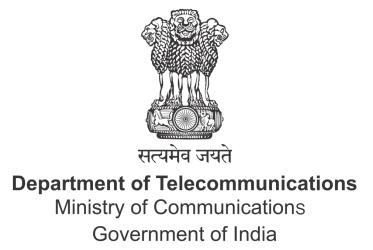 As per the new rules, the DoT has introduced three new methods to link the registered mobile number with Aadhaar i.e. OTP (One Time Password) based, App based and the IVRS facility.
These new methods will help subscribers to get their mobile number linked to Aadhaar without visiting the stores of the telcos.
For the ease of senior citizens and the people with disability and chronic illness, DoT has also recommended for the re-verification at subscribers’ doorstep.
According to the new guidelines, the telecom operators should provide an online mechanism for people to request such service and based on availability schedule the visit and complete the process.
The Aadhaar number system was designed to allow all residents of the country access to critical government services and important information that they may need from time to time.
Mobile penetration is increasing rapidly in the country and the subscribers need to be provided with the ease of linking of the Aadhaar number with the mobile number.
It is the government’s endeavour to improve convenience and reduce time and energy spent by consumers to accessing government information and services that is their right to access.
DoT has mandated that telecom service providers’ agent should not have access to the subscribers’ e-KYC data and only the name and address of the subscribers should be visible.
Subscribers can verify or re-verify their mobile numbers from anywhere in the country irrespective of which service area their mobile connection belongs to. As per the new rules, the DoT has introduced three new methods to link the registered mobile number with Aadhaar i.e. OTP (One Time Password) based, App based and the IVRS facility.
These new methods will help subscribers to get their mobile number linked to Aadhaar without visiting the stores of the telcos.
For the ease of senior citizens and the people with disability and chronic illness, DoT has also recommended for the re-verification at subscribers’ doorstep.
According to the new guidelines, the telecom operators should provide an online mechanism for people to request such service and based on availability schedule the visit and complete the process.
The Aadhaar number system was designed to allow all residents of the country access to critical government services and important information that they may need from time to time.
Mobile penetration is increasing rapidly in the country and the subscribers need to be provided with the ease of linking of the Aadhaar number with the mobile number.
It is the government’s endeavour to improve convenience and reduce time and energy spent by consumers to accessing government information and services that is their right to access.
DoT has mandated that telecom service providers’ agent should not have access to the subscribers’ e-KYC data and only the name and address of the subscribers should be visible.
Subscribers can verify or re-verify their mobile numbers from anywhere in the country irrespective of which service area their mobile connection belongs to.
|
▼ New initiative SAATHI to help small industries [10-25-17]
 Ministries of Power and Textiles have joined hands under a new initiative SAATHI (Sustainable and Accelerated Adoption of efficient Textile technologies to Help small Industries).
Under this initiative, Energy Efficiency Services Limited (EESL), a public sector entity under the administrative control of Ministry of Power, would procure energy efficient Powerlooms, motors and Rapier kits in bulk and provide them to the small and medium Powerloom units at no upfront cost.
The SAATHI initiative of the Government will be jointly implemented by EESL and the office of the Textile Commissioner on a pan-India basis.
To kick start the implementation, cluster wise demonstration projects and workshops will be organized in key clusters such as Erode, Surat, Ichalkaranji, etc.
The use of these efficient equipment would result in energy savings and cost savings to the unit owner and he would repay in instalments to EESL over a 4 to 5 year period.
This is the aggregation, bulk procurement and financing model that EESL has successfully deployed in several sectors like LED bulbs, Smart Meters and Electric Vehicles.
The unit owner neither has to allocate any upfront capital cost to procure these equipment nor does it have to allocate additional expenditure for repayment as the repayments to EESL are made from the savings that accrue as a result of higher efficiency equipments and cost savings.
The aggregation of demand and bulk procurement will also lead to reduction in capital cost, benefits of which will be passed on to the Powerloom units so that their repayment amount and period would reduce.
Powerloom Sector in India Ministries of Power and Textiles have joined hands under a new initiative SAATHI (Sustainable and Accelerated Adoption of efficient Textile technologies to Help small Industries).
Under this initiative, Energy Efficiency Services Limited (EESL), a public sector entity under the administrative control of Ministry of Power, would procure energy efficient Powerlooms, motors and Rapier kits in bulk and provide them to the small and medium Powerloom units at no upfront cost.
The SAATHI initiative of the Government will be jointly implemented by EESL and the office of the Textile Commissioner on a pan-India basis.
To kick start the implementation, cluster wise demonstration projects and workshops will be organized in key clusters such as Erode, Surat, Ichalkaranji, etc.
The use of these efficient equipment would result in energy savings and cost savings to the unit owner and he would repay in instalments to EESL over a 4 to 5 year period.
This is the aggregation, bulk procurement and financing model that EESL has successfully deployed in several sectors like LED bulbs, Smart Meters and Electric Vehicles.
The unit owner neither has to allocate any upfront capital cost to procure these equipment nor does it have to allocate additional expenditure for repayment as the repayments to EESL are made from the savings that accrue as a result of higher efficiency equipments and cost savings.
The aggregation of demand and bulk procurement will also lead to reduction in capital cost, benefits of which will be passed on to the Powerloom units so that their repayment amount and period would reduce.
Powerloom Sector in India
- The Powerloom sector in India is predominantly an unorganised sector and has a large number of micro and small units which produce 57 percent of the total cloth in the country.
- There are 24.86 lakhs Powerloom units in this country, most of whom use obsolete technology. With a view to upgrading the technology, the Government of India has been implementing the INSITU upgradation of plain Powerlooms as part of Power Tex India.
- This is a scheme in which plain Powerlooms are attached with process control equipment leading to higher productivity, better quality and more than 50 percent additional value realisation.
- So far 1.70 lakhs plain Powerlooms have been upgraded under the scheme, with a total Government of India subsidy of INR 186 crores.
|
▼ AI policy by GoI forms committee on artificial intelligence laws [10-23-17]
 The Union ministry of electronics and information technology has set up an internal committee to advise the government on a policy on artificial intelligence (AI).
Top sources said that the expert committee will advise the IT ministry on the most apt technologies for India.
The government's main focus is to reduce cyber attacks with AI.
The main policy will be drawn up once the committee gives its report.
Senior sources at the IT ministry pointed out that officials from Union home and finance ministries are also involved in the consultations.
AI is also widely seen as a major challenge in generation of employment as many companies are likely to depend more on it to cut down on human resources.
A subject that has cropped up every time that IT minister Ravi Shankar Prasad has met top tech companies.
The artificial intelligence market is estimated to touch $153 billion in 2020 and expected to grow at a compounded annual growth rate of 45.4% from 2016 to 2022.
The government has recently drawn up a seven-point strategy that would form the framework for India's strategic plan to use AI.
The strategy includes developing methods for human machine interactions; ensuring safety and security of AI systems; creating a competent workforce in line with AI and R&D needs, understanding and addressing the ethical, legal and societal implications of AI, measuring and evaluating AI technologies through standards and benchmarks, among others.
AI can benefit various government agencies in their functioning. But at the same time we have to ensure that an indigenous workforce to develop AI is created.
Globally too, there is a growing interest in AI. In 2016, the White House initiated work on Preparing for the future of artificial intelligence; in the UK, the House of Commons committee on S&T looked at robotics and artificial intelligence while in 2017, the State Council of China started work on the next generation artificial intelligence development plan. The Union ministry of electronics and information technology has set up an internal committee to advise the government on a policy on artificial intelligence (AI).
Top sources said that the expert committee will advise the IT ministry on the most apt technologies for India.
The government's main focus is to reduce cyber attacks with AI.
The main policy will be drawn up once the committee gives its report.
Senior sources at the IT ministry pointed out that officials from Union home and finance ministries are also involved in the consultations.
AI is also widely seen as a major challenge in generation of employment as many companies are likely to depend more on it to cut down on human resources.
A subject that has cropped up every time that IT minister Ravi Shankar Prasad has met top tech companies.
The artificial intelligence market is estimated to touch $153 billion in 2020 and expected to grow at a compounded annual growth rate of 45.4% from 2016 to 2022.
The government has recently drawn up a seven-point strategy that would form the framework for India's strategic plan to use AI.
The strategy includes developing methods for human machine interactions; ensuring safety and security of AI systems; creating a competent workforce in line with AI and R&D needs, understanding and addressing the ethical, legal and societal implications of AI, measuring and evaluating AI technologies through standards and benchmarks, among others.
AI can benefit various government agencies in their functioning. But at the same time we have to ensure that an indigenous workforce to develop AI is created.
Globally too, there is a growing interest in AI. In 2016, the White House initiated work on Preparing for the future of artificial intelligence; in the UK, the House of Commons committee on S&T looked at robotics and artificial intelligence while in 2017, the State Council of China started work on the next generation artificial intelligence development plan.
|
▼ Government allows banks to accept deposits under small savings schemes [10-23-17]
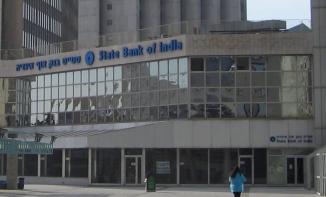 In order to encourage savings, the government has allowed banks, including top three private sector lenders, to accept deposits under various small savings schemes like National Savings Certificate (NSC), recurring deposits and monthly income plan.
According to a recent government notification, banks can also sell National Savings Time Deposit Scheme 1981, National Savings (Monthly Income Account) Scheme 1987, National Savings Recurring Deposit Scheme 1981 and NSC VIII issue.
As per the notification, all public sector banks and top three in the private sector - ICICI Bank, HDFC Bank and Axis Bank - to receive subscription from the expanded portfolios. In order to encourage savings, the government has allowed banks, including top three private sector lenders, to accept deposits under various small savings schemes like National Savings Certificate (NSC), recurring deposits and monthly income plan.
According to a recent government notification, banks can also sell National Savings Time Deposit Scheme 1981, National Savings (Monthly Income Account) Scheme 1987, National Savings Recurring Deposit Scheme 1981 and NSC VIII issue.
As per the notification, all public sector banks and top three in the private sector - ICICI Bank, HDFC Bank and Axis Bank - to receive subscription from the expanded portfolios.
|
▼ Urban-rural inequity on the rise [10-23-17]
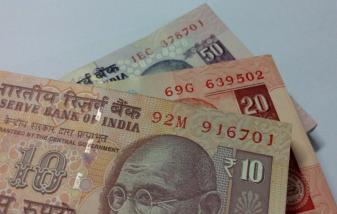 According to the Ministry of statistics, urban households spend 84 percent more than their rural counterparts, depicting the stark inequality of the standard of living between urban and rural India.
In a paper released by Monojit Das, Deputy Director of the National Sample Survey Office, the household monthly per capita consumer expenditure (MPCE) in urban areas is an average of INR 2,630 while it is INR 1,430 in rural areas.
The paper titled, "Household Consumer Expenditure across Religious Groups in India" documents the variation in household expenditures across the different religious group.
It also highlights that Muslim households depict the least difference in terms of the rural-urban divide, with urban households spending 34 percent more than rural.
Hindus recorded the highest difference of 67 percent while the figures stood at 47 percent for Christians.
The paper also documents that Muslim households spend the most on food, among all other religious groups. But surprisingly the expenditure on food and beverages decreases as the income increases, having an inverse relationship.
The Hindu families come second with rural households spending 56 percent on food and urban families spending 43 percent, followed by the Christian households which spend 54 percent and 49 percent on food in the rural and urban areas, respectively. According to the Ministry of statistics, urban households spend 84 percent more than their rural counterparts, depicting the stark inequality of the standard of living between urban and rural India.
In a paper released by Monojit Das, Deputy Director of the National Sample Survey Office, the household monthly per capita consumer expenditure (MPCE) in urban areas is an average of INR 2,630 while it is INR 1,430 in rural areas.
The paper titled, "Household Consumer Expenditure across Religious Groups in India" documents the variation in household expenditures across the different religious group.
It also highlights that Muslim households depict the least difference in terms of the rural-urban divide, with urban households spending 34 percent more than rural.
Hindus recorded the highest difference of 67 percent while the figures stood at 47 percent for Christians.
The paper also documents that Muslim households spend the most on food, among all other religious groups. But surprisingly the expenditure on food and beverages decreases as the income increases, having an inverse relationship.
The Hindu families come second with rural households spending 56 percent on food and urban families spending 43 percent, followed by the Christian households which spend 54 percent and 49 percent on food in the rural and urban areas, respectively.
|
▼ WCD Ministry launches “IamThatWoman” to end gender bias [10-18-17]
 In an attempt to end Gender bias in women against women, the Ministry of Women and Child Development is undertaking an online campaign #IamThatWoman.
Through the campaign, the Ministry seeks to highlight the various aspects of women standing 'by' and 'for' women.
Ministry of WCD has urged people to shun stereotypes associated with women harming other women.
Twitter and Facebook users have been encouraged to tag and share stories of women helping women with a photograph and post online with the hashtag #IamThatWoman.
#IamThatWoman' campaign aims to spread the message that a woman can move mountains for another woman. In an attempt to end Gender bias in women against women, the Ministry of Women and Child Development is undertaking an online campaign #IamThatWoman.
Through the campaign, the Ministry seeks to highlight the various aspects of women standing 'by' and 'for' women.
Ministry of WCD has urged people to shun stereotypes associated with women harming other women.
Twitter and Facebook users have been encouraged to tag and share stories of women helping women with a photograph and post online with the hashtag #IamThatWoman.
#IamThatWoman' campaign aims to spread the message that a woman can move mountains for another woman.
|
▼ Adopt a Heritage Scheme to introduce Monument Mitras [10-16-17]
 India has always been renowned for its rich cultural heritage. India’s glorious past and cultural diversity make a potent blend which attracts millions of tourists each year to its tourist destinations.
India's rich heritage is abundantly reflected in the form of numerous temples, palaces, monuments, forts etc.
This has led to an increase in India's tourism particularly at the heritage sites. Tourism in India has registered a considerable growth in the last few years, ever since additional initiatives were taken by the Government of India to boost India’s image as a destination for tourism.
Ministry of Tourism in close collaboration with Ministry of Culture and Archaeological Survey of India (ASI) envisages providing world class tourist facilities at the various heritage sites / monuments and other tourist sites across the country under the “Adopt A Heritage” initiative.
The project would begin with ASI ticketed monuments and would be expanded to other cultural sites across India. It envisages entrusting of heritage sites/monuments and other tourist sites to private - public sector companies, or individuals for the “Monument Mitras” development of tourist friendly amenities and facilities. India has always been renowned for its rich cultural heritage. India’s glorious past and cultural diversity make a potent blend which attracts millions of tourists each year to its tourist destinations.
India's rich heritage is abundantly reflected in the form of numerous temples, palaces, monuments, forts etc.
This has led to an increase in India's tourism particularly at the heritage sites. Tourism in India has registered a considerable growth in the last few years, ever since additional initiatives were taken by the Government of India to boost India’s image as a destination for tourism.
Ministry of Tourism in close collaboration with Ministry of Culture and Archaeological Survey of India (ASI) envisages providing world class tourist facilities at the various heritage sites / monuments and other tourist sites across the country under the “Adopt A Heritage” initiative.
The project would begin with ASI ticketed monuments and would be expanded to other cultural sites across India. It envisages entrusting of heritage sites/monuments and other tourist sites to private - public sector companies, or individuals for the “Monument Mitras” development of tourist friendly amenities and facilities.
|
▼ CCEA approves 2 WB schemes: SANKALP and STRIVE [10-12-17]
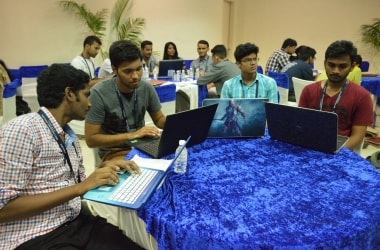 The Cabinet Committee on Economic Affairs chaired by the Prime Minister Shri Narendra Modi, has approved two new World Bank supported schemes of INR 6,655 crore - Skills Acquisition and Knowledge Awareness for Livelihood Promotion (SANKALP) and Skill Strengthening for Industrial Value Enhancement (STRIVE).
SANKALP is INR 4,455 crore Centrally sponsored scheme including INR 3,300 crore loan support from World Bank whereas STRIVE is a INR 2,200 crore - central sector scheme, with half of the scheme outlay as World bank loan assistance.
SANKALP and STRIVE are outcome focused schemes marking shift in government's implementation strategy in vocational education and training from inputs to results.
There has been a long felt need for a national architecture for promoting convergence, ensuring effective governance and regulation of skill training and catalysing industry efforts in vocational training space.
The two schemes shall address this need by setting up national bodies for accreditation & certification which shall regulate accreditation and certification in both long and short term Vocational Education and Training (VET).
The architecture shall help, for the first time in the history of vocational education in India, to converge the efforts of various central, state and private sector institutions thereby avoiding duplication of activities and bringing about uniformity in vocational training thus, creating better impact.
Vocational schemes in India: Know More The Cabinet Committee on Economic Affairs chaired by the Prime Minister Shri Narendra Modi, has approved two new World Bank supported schemes of INR 6,655 crore - Skills Acquisition and Knowledge Awareness for Livelihood Promotion (SANKALP) and Skill Strengthening for Industrial Value Enhancement (STRIVE).
SANKALP is INR 4,455 crore Centrally sponsored scheme including INR 3,300 crore loan support from World Bank whereas STRIVE is a INR 2,200 crore - central sector scheme, with half of the scheme outlay as World bank loan assistance.
SANKALP and STRIVE are outcome focused schemes marking shift in government's implementation strategy in vocational education and training from inputs to results.
There has been a long felt need for a national architecture for promoting convergence, ensuring effective governance and regulation of skill training and catalysing industry efforts in vocational training space.
The two schemes shall address this need by setting up national bodies for accreditation & certification which shall regulate accreditation and certification in both long and short term Vocational Education and Training (VET).
The architecture shall help, for the first time in the history of vocational education in India, to converge the efforts of various central, state and private sector institutions thereby avoiding duplication of activities and bringing about uniformity in vocational training thus, creating better impact.
Vocational schemes in India: Know More
- Both the schemes are aimed at institutional reforms and improving quality & market relevance of skill development training programs in long and short term VET.
- In past many government schemes such as Vocational Training Improvement Project (VTIP) have focussed on strengthening ITIs and over 1600 ITIs have already been modernized under the schemes. STRIVE scheme shall incentivize ITIs to improve overall performance including apprenticeship by involving SMEs, business association and industry clusters.
- The schemes aim to develop a robust mechanism for delivering quality skill development training by strengthening institutions such as State Skill Development Missions (SSDMs), National Skill Development Corporation (NSDC), Sector Skill Councils (SSCs), ITIs and National Skill Development Agency (NSDA) etc.
- The schemes shall support universalization of National Skills Qualification Framework (NSQF) including National Quality Assurance Framework (NQAF) across the skill development schemes of central and state governments thus ensuring standardization in skill delivery, content and training output.
- The schemes shall provide the required impetus to the National Skill Development Mission, 2015 and its various sub missions.
- The schemes are aligned to flagship Government of India programs such as Make in India and Swachhta Abhiyan and aim at developing globally competitive workforce for domestic and overseas requirements.
Details of Schemes- 700 industry led institutions are being set up for providing job oriented skill training to lakhs of aspirants.
- An innovative challenge fund model has been employed to select and support proposals to set up such institutions in identified sectors and geographies.
- 66+ India International stalling institutions are being promoted to focus upon skill training as per global standards for overseas placements.
- Over 30,000 aspirants shall be trained in IISCs and get certificates from International Awarding Bodies (lABs).
- Upgrading 500 ITIs, as model ITIs across India and improving their industry connect, is also envisaged by ushering in reforms such as on-line examination, centralised admission, improving efficiency and transparency in the system.
- National Policy of Skill Development and Entrepreneurship 2015 highlighted the need of quality assurance measures such as building a pool quality trainers and assessors.
SANKALP- SANKALP envisages setting up of Trainers and Assessors academies with self-sustainable models.
- Over 50 such academies are to be set up in priority sectors.
- DOT, MSDE has already made significant progress in this direction by setting up a number of Institutes for Training of Trainers (IToT) in public and private sector, offering training in over 35 trades. The schemes shall leverage such institutions for training the trainers in both long & short term VET thereby bringing about convergence.
- Additional trainer academies shall be set up on the basis of identified sectoral and geographical gaps.
- SANKALP aims at enhancement of inclusion of marginalized communities including women. Scheduled Castes (SCs), Schedule Tribes (STs) and Persons with Disabilities (PWD) to provide skill training opportunities to the underprivileged and marginalised section of the society.
- The schemes will develop a skilling ecosystem that will support the country's rise in the Ease of Doing Business index by steady supply of skilled workforce to the industry.
- The schemes will also work towards increasing the aspirational value of skill development programs by increasing the marketability of skills, through better industry connect and quality assurance.
|
▼ RBI to launch financial literacy drive in 9 states [10-11-17]
 The Reserve Bank of India will soon launch a financial literacy drive in 80 blocks in nine states on a pilot basis to educate people on e-transactions, formal sector borrowings and insurance purchases.
Six NGOs registered with the Depositor Education and Awareness Fund - CRISIL Foundation, Dhan Foundation, Swadhaar Fin Access, Indian School of Micro Finance for Women (ISMW), Samarpit and the PACE Foundation - have been selected to execute the pilot project in collaboration with banks.
The Reserve Bank is initiating a pilot project on financial literacy at the block level to explore innovative and participatory approaches to financial literacy.
The pilot project will be commissioned in the 9 states of Maharashtra, Chhattisgarh, Bihar, Odisha, Karnataka, Telangana, Andhra Pradesh, Haryana and Uttar Pradesh across 80 blocks by the 6 NGOs in collaboration with the sponsor banks.
Total cost of the pilot project over a period of three years is INR 18.40 crore.
The aim of CFL is to inculcate the habit of making a household budget and recording financial transactions, encourage transactions in savings accounts, and active saving by depositing in banks through fixed deposits and recurring deposits.
Besides, the pilot project aims to ensure people borrow from formal finance institutions and approach banking Ombudsman for redressal of their grievances.
It will also encourage e-transactions through electronic means viz NEFT, RTGS, IMPS, Internet Banking, Mobile Banking, UPI (Unified Payment Interface) etc.
The NGO will be educating people to buy life insurance and pension products. The Reserve Bank of India will soon launch a financial literacy drive in 80 blocks in nine states on a pilot basis to educate people on e-transactions, formal sector borrowings and insurance purchases.
Six NGOs registered with the Depositor Education and Awareness Fund - CRISIL Foundation, Dhan Foundation, Swadhaar Fin Access, Indian School of Micro Finance for Women (ISMW), Samarpit and the PACE Foundation - have been selected to execute the pilot project in collaboration with banks.
The Reserve Bank is initiating a pilot project on financial literacy at the block level to explore innovative and participatory approaches to financial literacy.
The pilot project will be commissioned in the 9 states of Maharashtra, Chhattisgarh, Bihar, Odisha, Karnataka, Telangana, Andhra Pradesh, Haryana and Uttar Pradesh across 80 blocks by the 6 NGOs in collaboration with the sponsor banks.
Total cost of the pilot project over a period of three years is INR 18.40 crore.
The aim of CFL is to inculcate the habit of making a household budget and recording financial transactions, encourage transactions in savings accounts, and active saving by depositing in banks through fixed deposits and recurring deposits.
Besides, the pilot project aims to ensure people borrow from formal finance institutions and approach banking Ombudsman for redressal of their grievances.
It will also encourage e-transactions through electronic means viz NEFT, RTGS, IMPS, Internet Banking, Mobile Banking, UPI (Unified Payment Interface) etc.
The NGO will be educating people to buy life insurance and pension products.
|
▼ Rajasthan - First state to incorporate skill development in higher education [10-11-17]
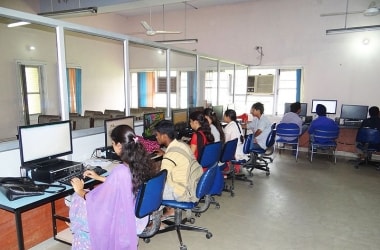 Rajasthan has become the first state to incorporate skill development programme in the higher education.
The programme was launched by the state’s Higher Education Minister Kiran Maheshwari and Vice Chancellor of IGNOU Prof Ravindra Kumar on 10 October 2017 in Jaipur.
The state’s Department of College Education in collaboration with IGNOU has prepared 16 courses for entrepreneurship and skill development for colleges in the state.
Under the project, 12 certificates and 4 diploma courses will be run and each college will be required to choose five courses.
94 colleges have already joined the project and 5656 students have registered themselves in it.
The practical training of the students pursuing the skill development courses will be done in different government departments.
The aim is for more than 10 thousand students to be enrolled in the programmes in the next session. Rajasthan has become the first state to incorporate skill development programme in the higher education.
The programme was launched by the state’s Higher Education Minister Kiran Maheshwari and Vice Chancellor of IGNOU Prof Ravindra Kumar on 10 October 2017 in Jaipur.
The state’s Department of College Education in collaboration with IGNOU has prepared 16 courses for entrepreneurship and skill development for colleges in the state.
Under the project, 12 certificates and 4 diploma courses will be run and each college will be required to choose five courses.
94 colleges have already joined the project and 5656 students have registered themselves in it.
The practical training of the students pursuing the skill development courses will be done in different government departments.
The aim is for more than 10 thousand students to be enrolled in the programmes in the next session.
|
▼ MoRT's Value Engineering Programme for highway projects [10-11-17]
 materials, and equipment in highways projects executed either under PPP mode or public funding mode.
The objective of the programme is to use innovative technology, materials and equipment to reduce the cost of projects and make them more environment friendly, while simultaneously ensuring that the roads or bridges and other assets get constructed much faster, are structurally stronger and more durable.
The Value Engineering Programme is expected to materials, and equipment in highways projects executed either under PPP mode or public funding mode.
The objective of the programme is to use innovative technology, materials and equipment to reduce the cost of projects and make them more environment friendly, while simultaneously ensuring that the roads or bridges and other assets get constructed much faster, are structurally stronger and more durable.
The Value Engineering Programme is expected to
- increase speed of construction,
- reduce construction cost,
- increase asset durability and
- improve aesthetics and safety.
The Ministry had constituted a National Panel of Experts (NPE) last year, for approving proposals pertaining to deployment of
(a) new/innovative/alternative materials,
(b) new/innovative/alternative technologies and
(c) new/innovative/alternative equipment in the highway sector.
NPE: Know More- The NPE will examine all technical matters involving the new technologies, materials and equipment referred to it by the concerned Engineers or concessionaires/ contractors.
- The NPE will also resolve the technical issues which arise as a result of difference in view between engineers and concessionaires/contractors regarding implementation of the new and innovative technologies, materials and equipment.
- In addition, it will also decide about the need for field trials of any new or innovative technology/materials/ equipment before its adoption, and finalize associated design approaches, construction methodologies/sequences as well as the relevant specifications/codes/ guidelines so that the contractor may use the proposed new/alternative materials/technologies/ equipment in project highway.
|
▼ IMI - Intensified Mission Indradhanush [10-9-17]
 PM Modi launched the Intensified Mission Indradhanush (IMI) at Vadnagar in Gujarat.
Through this programme, Government of India aims to reach each and every child under two years of age and all those pregnant women who have been left uncovered under the routine immunisation programme.
The special drive will focus on improving immunization coverage in select districts and cities to ensure full immunization to more than 90% by December 2018.
The achievement of full immunisation under Mission Indradhanush to at least 90% coverage was to be achieved by 2020 earlier.
With the launch of IMI, achievement of the target has now been advanced.
The Prime Minister also highlighted other achievements of the Government including the new National Health Policy 2017 which has been unveiled after fifteen years, and is people-centred.
Regulating of the prices of stents has immensely helped a large section of the country by reducing the cost of healthcare on the middle income group and poor families.
The Prime Minister expressed satisfaction at the success of the Pradhan Mantri Matritva Suraksha Abhiyaan where private doctors have volunteered to provide free ANC services to pregnant women on the 9th of every month along with government doctors.
Mission Indradhanush PM Modi launched the Intensified Mission Indradhanush (IMI) at Vadnagar in Gujarat.
Through this programme, Government of India aims to reach each and every child under two years of age and all those pregnant women who have been left uncovered under the routine immunisation programme.
The special drive will focus on improving immunization coverage in select districts and cities to ensure full immunization to more than 90% by December 2018.
The achievement of full immunisation under Mission Indradhanush to at least 90% coverage was to be achieved by 2020 earlier.
With the launch of IMI, achievement of the target has now been advanced.
The Prime Minister also highlighted other achievements of the Government including the new National Health Policy 2017 which has been unveiled after fifteen years, and is people-centred.
Regulating of the prices of stents has immensely helped a large section of the country by reducing the cost of healthcare on the middle income group and poor families.
The Prime Minister expressed satisfaction at the success of the Pradhan Mantri Matritva Suraksha Abhiyaan where private doctors have volunteered to provide free ANC services to pregnant women on the 9th of every month along with government doctors.
Mission Indradhanush
- The four phases of Mission Indradhanush have reached to more than 2.53 crore children and 68 lakh pregnant women with life-saving vaccines including 5.21 lakh children & 1.27 lakh pregnant women in Gujarat.
- Through this mission, we have accelerated our progress towards our target of 90% full immunization coverage.
- Earlier the increase in full immunization coverage was 1% per year which has increased to 6.7% per year through the first two phases of ‘Mission Indradhanush’.
- With a sharpened focus on high priority districts and urban areas, under IMI, four consecutive immunization rounds will be conducted for 7 days in 173 districts-121 districts and 17 cities in 16 states and 52 districts in 8 north eastern states-every month between October 2017 and January 2018.
- Intensified Mission Indradhanush will cover low performing areas in the selected districts and urban areas.
- These areas have been selected through triangulation of data available under national surveys, Health Management Information System data and World Health Organization concurrent monitoring data. Special attention will be given to unserved/low coverage pockets in sub-centre and urban slums with migratory population.
- The focus is also on the urban settlements and cities identified under National Urban Health Mission (NUHM).
- Intensified Mission Indradhanush will have inter-ministerial and inter-departmental coordination, action-based review mechanism and intensified monitoring and accountability framework for effective implementation of targeted rapid interventions to improve the routine immunization coverage.
- IMI is supported by 11 other ministries and departments, such as Ministry of Women and Child Development, Panchayati Raj, Ministry of Urban Development, Ministry of Youth Affairs among others. The convergence of ground level workers of various departments like ASHA, ANMs, Anganwadi workers, Zila preraks under National Urban Livelihood Mission (NULM), self-help groups will be ensured for better coordination and effective implementation of the programme.
- Intensified Mission Indradhanush would be closely monitored at the district, state and central level at regular intervals.
- Further, it would be reviewed by the Cabinet Secretary at the National level and will continue to be monitored at the highest level under a special initiative ‘Proactive Governance and Timely Implementation (PRAGATI)’.
Intensified Mission- This Intensified Mission is driven based on the information received from gap assessment, supervision through government, concurrent monitoring by partners, and end-line surveys.
- Under IMI, special strategies are devised for rigorous monitoring of the programme. States and districts have developed coverage improvement plans based on gap self-assessment.
- These plans are reviewed from state to central level with an aim to reach 90% coverage by December 2018.
- An appreciation and awards mechanism is also conceived to recognize the districts reaching more than 90% coverage.
- The criteria includes best practices and media management during crisis. To acknowledge the contribution of the partners/Civil Society Organization (CSOs) and others, Certificate of Appreciation will be given.
|
▼ IBBI (Information Utilities) Regulations, 2017 notified [10-6-17]
 IBBI had notified the IBBI (Information Utilities) Regulations, 2017 on 31st March, 2017.
These regulations provided that ordinarily a person should not hold more than 10% of paid up equity share capital or voting power of an information utility, while allowing certain specified persons to hold up to 25%.
These further provided that a person may hold up to 51% of paid-up equity share capital or total voting power of an information utility till the expiry of three years from its registration.
IBBI has amended the IBBI (Information Utilities) Regulations, 2017 on 29th September, 2017.
According to the amended regulations, a person may, directly or indirectly, either by itself or together with persons acting in concert, hold up to fifty-one percent of the paid-up equity share capital or total voting power of an information utility up to three years from the date of its registration.
Further, an Indian company, (i) which is listed on a Stock Exchange in India, or (ii) where no individual, directly or indirectly, either by himself or together with persons acting in concert, holds more than ten percent of the paid-up equity share capital, may hold up to hundred percent of the paid-up equity share capital or total voting power of an information utility up to three years from the date of its registration.
However, these amended provisions are be available in respect of information utilities registered before 30th September, 2018.
The amendment requires that more than half of the directors of an information utility shall be Indian nationals and residents in India. IBBI had notified the IBBI (Information Utilities) Regulations, 2017 on 31st March, 2017.
These regulations provided that ordinarily a person should not hold more than 10% of paid up equity share capital or voting power of an information utility, while allowing certain specified persons to hold up to 25%.
These further provided that a person may hold up to 51% of paid-up equity share capital or total voting power of an information utility till the expiry of three years from its registration.
IBBI has amended the IBBI (Information Utilities) Regulations, 2017 on 29th September, 2017.
According to the amended regulations, a person may, directly or indirectly, either by itself or together with persons acting in concert, hold up to fifty-one percent of the paid-up equity share capital or total voting power of an information utility up to three years from the date of its registration.
Further, an Indian company, (i) which is listed on a Stock Exchange in India, or (ii) where no individual, directly or indirectly, either by himself or together with persons acting in concert, holds more than ten percent of the paid-up equity share capital, may hold up to hundred percent of the paid-up equity share capital or total voting power of an information utility up to three years from the date of its registration.
However, these amended provisions are be available in respect of information utilities registered before 30th September, 2018.
The amendment requires that more than half of the directors of an information utility shall be Indian nationals and residents in India.
|
▼ SEBI committee seeks to boost capital market regulator's authority over audits [10-6-17]
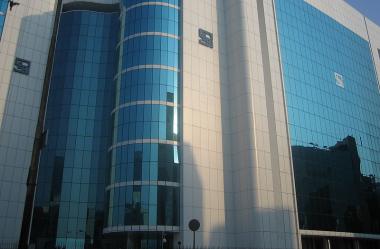 A Committee on Corporate Governance formed by the Securities and Exchange Board of India (SEBI) has proposed that the capital market regulator should have clear powers to act against auditors and other entities that have a statutory duties under the securities regulations.
This recommendation assumes significance as SEBI is in the midst of a legal battle with Price Waterhouse for the audit firm's alleged role in the matter related to the erstwhile Satyam Computer Services and the jurisdiction of the market regulator.
This is also perhaps the first time that a SEBI committee has formally stated that auditors should come under the regulatory purview of the capital market regulator.
The recommendation is part of the overall proposals related to 'Strengthening Monitoring, Oversight and Enforcement by SEBI'.
Given SEBI’s mandate to protect the interests of investors in the securities market and regulating listed entities, the Committee recommends that SEBI should have clear powers to act against auditors and other third party fiduciaries with statutory duties under securities law, the report states.
This power ought to extend to act against the impugned individual(s), as well as against the firm in question with respect to their functions concerning listed entities.
This power should be provided in case of gross negligence as well, and not just in case of fraud/connivance,” said the report while adding that the recommendation can be implemented after consulting other relevant stakeholders as well.
In 2010, SEBI issued a show-cause notice to Price Waterhouse, among many other entities, after it emerged that the accounts of Satyam were falsified and inflated.
The audit firm, however, filed a petition challenging the show-cause notice and the jurisdiction of SEBI over audit firms that are regulated by the Institute of Chartered Accountants of India (ICAI).
The case then went on to the Supreme Court, which in January, directed SEBI to expedite the enquiry against the audit firm and conclude the probe within six months.
Interestingly, The Institute of Chartered Accountants of India (ICAI), which was represented on the committee by its president Nilesh Vikamsey, has objected to this recommendation.
The committee, however, has also recommended strengthening the role of ICAI in punishing a member or imposing monetary penalties on audit firms.
It has recommended increasing the maximum penalty from the current INR 5 lakh to up to INR 1 crore on a member.
It has further proposed punishment or impose penalties up to INR 5 crore on the audit form in case of repeated violations.
These recommendations are part of a slew of proposals related to the role of independent directors, composition of the board of the company, oversight by audit committees and disclosure norms for listed companies. A Committee on Corporate Governance formed by the Securities and Exchange Board of India (SEBI) has proposed that the capital market regulator should have clear powers to act against auditors and other entities that have a statutory duties under the securities regulations.
This recommendation assumes significance as SEBI is in the midst of a legal battle with Price Waterhouse for the audit firm's alleged role in the matter related to the erstwhile Satyam Computer Services and the jurisdiction of the market regulator.
This is also perhaps the first time that a SEBI committee has formally stated that auditors should come under the regulatory purview of the capital market regulator.
The recommendation is part of the overall proposals related to 'Strengthening Monitoring, Oversight and Enforcement by SEBI'.
Given SEBI’s mandate to protect the interests of investors in the securities market and regulating listed entities, the Committee recommends that SEBI should have clear powers to act against auditors and other third party fiduciaries with statutory duties under securities law, the report states.
This power ought to extend to act against the impugned individual(s), as well as against the firm in question with respect to their functions concerning listed entities.
This power should be provided in case of gross negligence as well, and not just in case of fraud/connivance,” said the report while adding that the recommendation can be implemented after consulting other relevant stakeholders as well.
In 2010, SEBI issued a show-cause notice to Price Waterhouse, among many other entities, after it emerged that the accounts of Satyam were falsified and inflated.
The audit firm, however, filed a petition challenging the show-cause notice and the jurisdiction of SEBI over audit firms that are regulated by the Institute of Chartered Accountants of India (ICAI).
The case then went on to the Supreme Court, which in January, directed SEBI to expedite the enquiry against the audit firm and conclude the probe within six months.
Interestingly, The Institute of Chartered Accountants of India (ICAI), which was represented on the committee by its president Nilesh Vikamsey, has objected to this recommendation.
The committee, however, has also recommended strengthening the role of ICAI in punishing a member or imposing monetary penalties on audit firms.
It has recommended increasing the maximum penalty from the current INR 5 lakh to up to INR 1 crore on a member.
It has further proposed punishment or impose penalties up to INR 5 crore on the audit form in case of repeated violations.
These recommendations are part of a slew of proposals related to the role of independent directors, composition of the board of the company, oversight by audit committees and disclosure norms for listed companies.
|